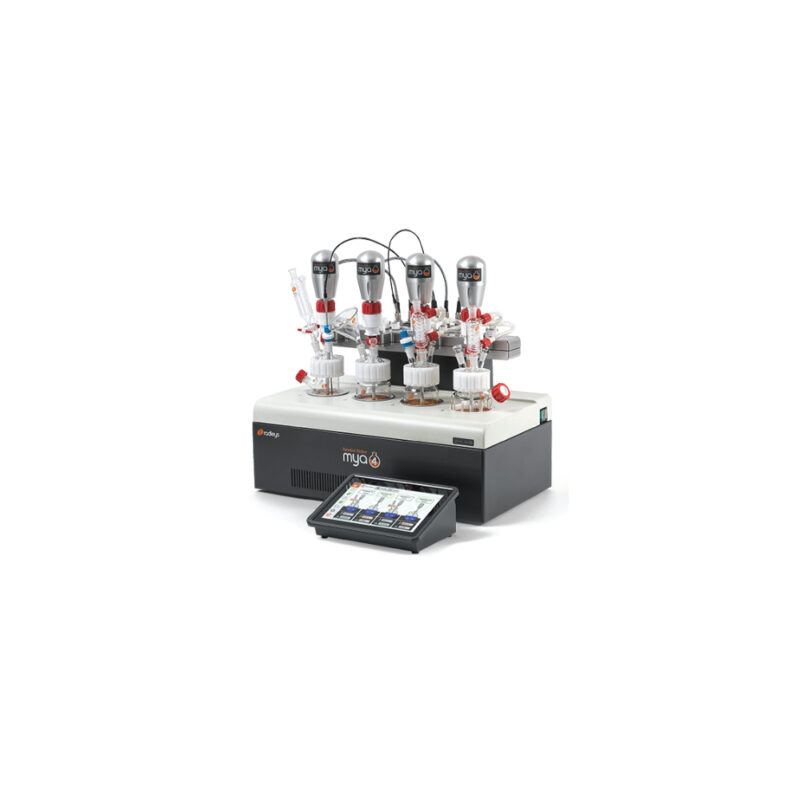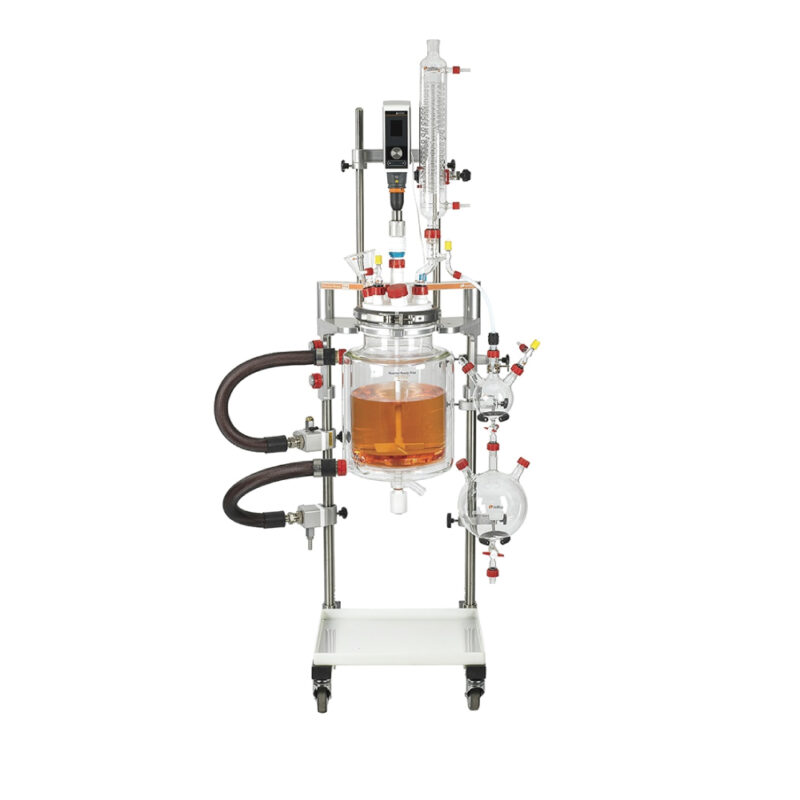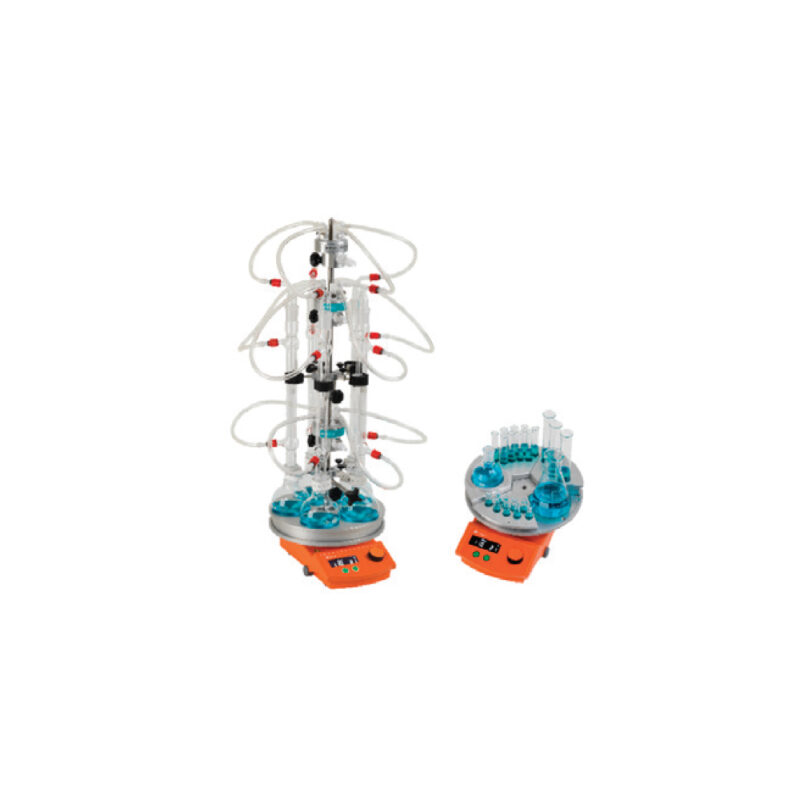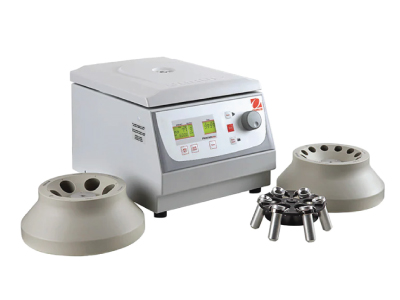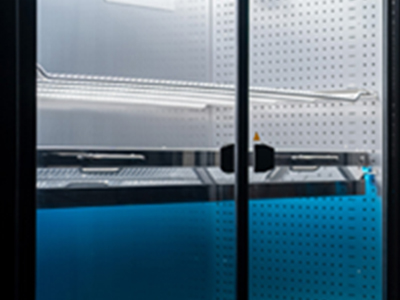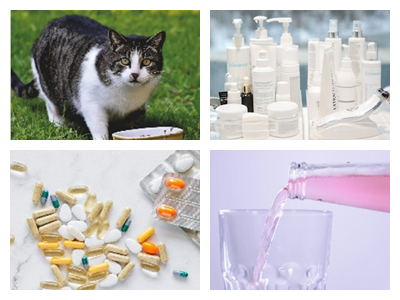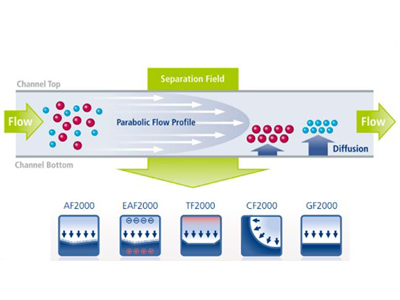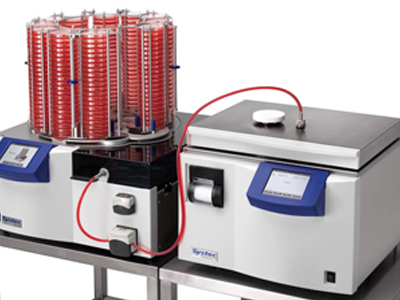Automation was the main requirement - the oil bath/dry ice option was not only time consuming but also provided inaccurate results.
Field of research: Electrochemistry, Chemistry of Catalysis, Energy Generation, Conversion and Storage Engineering
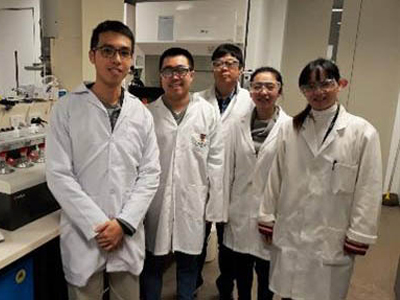
Situation
Methods previously used
- Multiple round bottom flasks with oil baths for heating
- Multiple round bottom flasks with dry ice for cooled reactions
Problems
- Issues with correct/accurate heating from oil baths
- Messy oil, potential hazards
- Issues with correct/accurate cooling from dry ice
- Constant dry ice refilling; time consuming, costs associated in materials and wasted operator time
The objective
Automation was the main requirement for UNSW (University of New South Wales) – the oil bath/dry ice option was not only time consuming but also provided inaccurate results.
The automation of heating/cooling and programmable features would mean repeatability and correct temperature control. The Mya 4 Reaction Station has achieved this and is working well for different reactions. It has also reduced operator interaction; as they can set programs, walk away and work on other experiments.
The results
In Vitro Technologies supplied and installed Radleys Mya 4 Reaction Station, trained the users and have offered additional assistance after sales support. The experiments at UNSW are now are working much smoother and quicker – with correct and accurate temperature control, programmable reactions and less operator interaction required. Mya 4 has increased productivity and improved reactions.
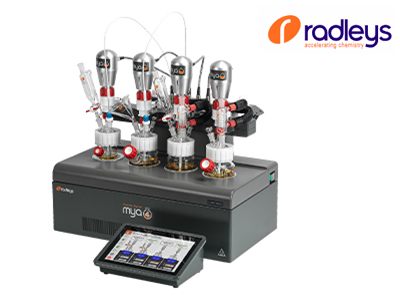
“The best feature of Mya 4 reactor is the simple instruction and the programmed temperature control to allow four independent reaction running at the same time – this saves us so much time to tune the reactors one by one or one after one. Also, the online monitoring and active cooling feature is really something that adds a lot – keeping reactions cool for a long time unsupervised is actually not a simple practical task”
Dr Kuang-Hsu (Tim) Wu, University of New South Wales, Chemical Engineering
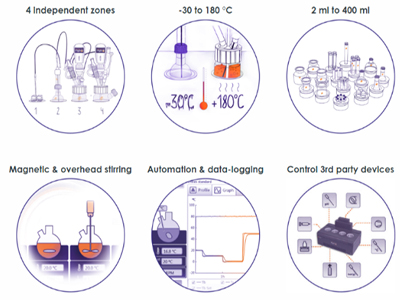
Dr Wu's feedback
“How did we hear about the Mya 4 Reaction Station? Our group was starting on a research direction on liquid phase (electro)catalysis and we were looking for a flexible but also multifunctional system which can adapt our research needs. For example, we need to screen various parameters (e.g., reactant concentration and temperature) of the same reaction.
One of our key needs is the ability to have independent temperature control for dry block heating with multiple channels. We realized that it was particularly difficult to find a quality assured product that actually can do this well. Mya 4 Reaction Station was launched during our search and we were fortunate to be the first buyer in Australia.
I think the best feature of Mya 4 reactor is the simple instruction and the programmed temperature control to allow four independent reaction running at the same time – this saves us so much time to tune the reactors one by one or one after one.
Also, the online monitoring and active cooling feature is really something that adds a lot – keeping reactions cool for a long time unsupervised is actually not a simple practical task.
I believe the features suit really well with my research need. In fact, we are looking into the application of using the reactor for adsorption-desorption analysis by its conveniently broad temperature range. This highly convenient instrument should find a good market.
We are making the best use of Mya 4 and extending its application for different research purposes. I would suggest a Mya 4 to colleagues if it fits their research objectives.”
About Dr Wu
Dr Kuang-Hsu (Tim) Wu received his PhD in Physical Chemistry from the University of Queensland in 2015, under the supervision of Professor Ian Gentle and Dr Da-Wei Wang. Later he collaborated as an Australian-Taiwan International Research Fellow with Professor Dang-Sheng Su at Institute of Metal Research, Chinese Academy of Sciences to continue his line of research in oxygen electrocatalysis and liquid-phase catalysis using advanced carbon materials, including graphene, carbon nanotube and nanodiamond derivatives. His research focuses on sustainable (electro) catalytic systems and materials surface chemistry in relation to catalytic reaction mechanisms, and is devoted to develop several in situ and on-line electroanalytical methods to study reaction properties. In mid-2017, Dr Wu joined PartCat group as a Faculty Research Fellow, working with ARC Laureate Professor Rose Amal and Scientia Fellow Dr Da-Wei Wang to start on new electrocatalysis and redox flow battery directions.
Reference : https://www.radleys.com/range/mya-4-reaction-station/
สินค้าที่เกี่ยวข้อง

ผู้เขียน: Tarakorn Nonrujjaya
Executive, Product Management
ผู้มีความเชี่ยวชาญเครื่องมือแบรนด์ Radleys
ติดต่อผู้เชี่ยวชาญได้ที่นี่ marketing.tec.th@dksh.com
บทความที่สนใจอื่นๆ
เปลี่ยนอนาคตการผลิต mRNA ด้วย Jacketed Glass Reactors
-
Posted by
patr.dksh
mRNA ไม่ใช่แค่เทคโนโลยีชั่วคราว แต่มันคือหัวใจของการรักษาแห่งอนาคต และกระบวนการสร้างมันต้องแม่นยำทุกวินาที
แล็กติกแอซิดแบคทีเรีย Lactic acid bacteria: LAB
-
Posted by
patr.dksh
ประโยชน์ของเชื้อในกลุ่ม Lactic Acid Bacteria ประโยชน์ต่ออุตหกรรมอาหารหมักดอง (Fermented Food) เป็นเชื้อจุลินทรีย์ที่ดีในระบบทางเดินอาหารของมนุษย์ (Probiotics)
เครื่องปั่นเหวี่ยง Frontier™ Multi Centrifuges เครื่องปั่นเหวี่ยงความเร็วต่ำที่เชื่อถือได้ และขนาดกะทัดรัด
-
Posted by
dksh-content
เครื่องปั่นเหวี่ยง เป็นเครื่องมือที่ใช้สําหรับเร่งการตกตะกอนของอนุภาคที่ไม่ละลายออกจาก ของเหลว หรือใช้แยกของเหลวหลายๆ ชนิด
เทคโนโลยีนวัตกรรมสำหรับการทดสอบที่น่าเชื่อถือ และมีประสิทธิภาพด้วยตู้บ่มควบคุมอุณหภูมิต่ำ (Cooling Incubators) และตู้จำลองสภาวะรุ่นใหม่ (Climate Chambers) จาก Binder
-
Posted by
Nammon
ต้องยอมรับว่าไม่ว่าคุณจะอยู่ในการทำงานสาขาไหน กระบวนการในการวิจัย และพัฒนาผลิตภัณฑ์เป็นเพียงกระบวนการแรกของการผลิตผลิตภัณฑ์ของคุณ
Campylobacter – Solution for isolation from food samples
-
Posted by
Nammon
แคมไพโลแบคเตอร์ (Campylobacter) เป็นเชื้อแบคทีเรียชนิดหนึ่งที่พบได้ทั่วไปในธรรมชาติ และในสัตว์โดยเฉพาะในสัตว์ปีก เจริญเติบโตได้ดีในที่ที่มีอากาศถ่ายเทได้น้อย ในช่วงอุณหภูมิ 37-42 องศาเซลเซียส
การวัดขนาดอนุภาคด้วยเทคนิคการเลี้ยวเบนของแสง (Laser Diffraction)
-
Posted by
Nammon
การวัดขนาดอนุภาคมีความสำคัญในหลายอุตสาหกรรม ไม่ว่าจะเป็นอุตสาหกรรมอาหาร, เครื่องดื่ม, ยาและเวชภัณฑ์, เครื่องสำอาง, เหมืองแร่, เกษตรกรรม และแบตเตอรี่
เครื่องวิเคราะห์กรดอะมิโน (Amino Acid Analyzer, AAA)
-
Posted by
Nammon
โปรตีนและกรดอะมิโนเป็นสารอาหารที่สำคัญและจำเป็นต่อการดำรงชีวิตของสิ่งมีชีวิต มีบทบาทสำคัญในกระบวนการทางชีวภาพต่างๆ โดยกรดอะมิโนถือเป็นหน่วยย่อยพื้นฐานของโปรตีน
การแยกอนุภาคในสารละลายโดยเทคนิคการไหลภายใต้สนาม (Field-Flow Fractionation, FFF)
-
Posted by
Nammon
เทคนิค “Field Flow Fractionation (FFF)” ถูกพัฒนาโดยบริษัท Postnova (ประเทศเยอรมนี) เป็นเทคนิคการแยกสารโดยไม่ใช้ Stationary Phase (Resin/Bead)
เตรียมอาหารเลี้ยงเชื้อง่ายๆ ด้วย Systec Media preparator
-
Posted by
Nammon
การเตรียมอาหารเลี้ยงเชื้อมีหลายขั้นตอน มีความยุ่งยาก และใช้เวลานาน แต่หากท่านใช้ ชุดเตรียมอาหารเลี้ยงเชื้ออัตโนมัติ (Media Preparator และ Mediafill) แบรนด์ Systec จากประเทศเยอรมนี
CHEMUNEX® SCANRDI®: Automated Solution for Sterility Testing of Biopharmaceutical Products and Environmental Sample
-
Posted by
Nammon
การผลิตสารชีวภัณฑ์ในปัจจุบัน ไม่ว่าจะเป็น Vaccines, Recombinant Protein หรือ Cell & Gene Therapies ล้วนแต่เป็นสารชีวโมเลกุลซึ่งมีอายุการใช้งานที่สั้น ทางอุตสาหกรรม Biopharmaceutical
MASTERCLAVE® 60 EVO: Efficient broth and media preparation
-
Posted by
Nammon
การประกันคุณภาพอาหารเลี้ยงเชื้อเพื่อให้เป็นไปตามมาตรฐาน ISO 11133 ของห้องปฏิบัติการ การวิเคราะห์เชื้อจุลินทรีย์ของโรงงานอุตสาหกรรมต่างๆ
ความสำคัญของค่า Water activity กับคุณภาพของอาหาร
-
Posted by
Nammon
เป็นที่ทราบกันดีว่าการลดความชื้นในอาหารเป็นหนึ่งในวิธีการถนอมอาหารที่สำคัญ แต่รู้หรือไม่ว่าความชื้นในอาหารนั้นมีความซับซ้อนมากกว่าที่คิด น้ำในอาหารแบ่งออกเป็นสองส่วนหลัก

